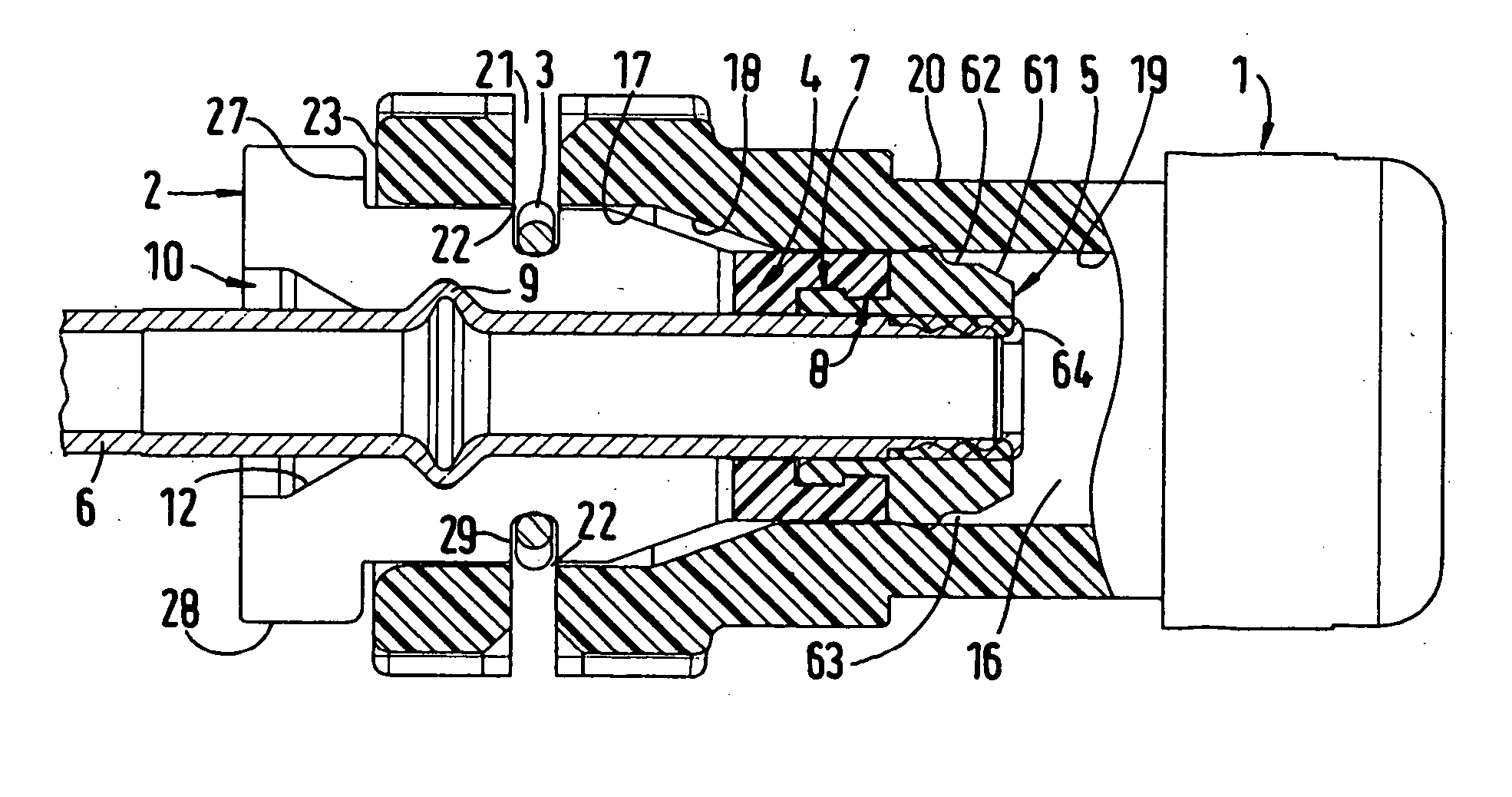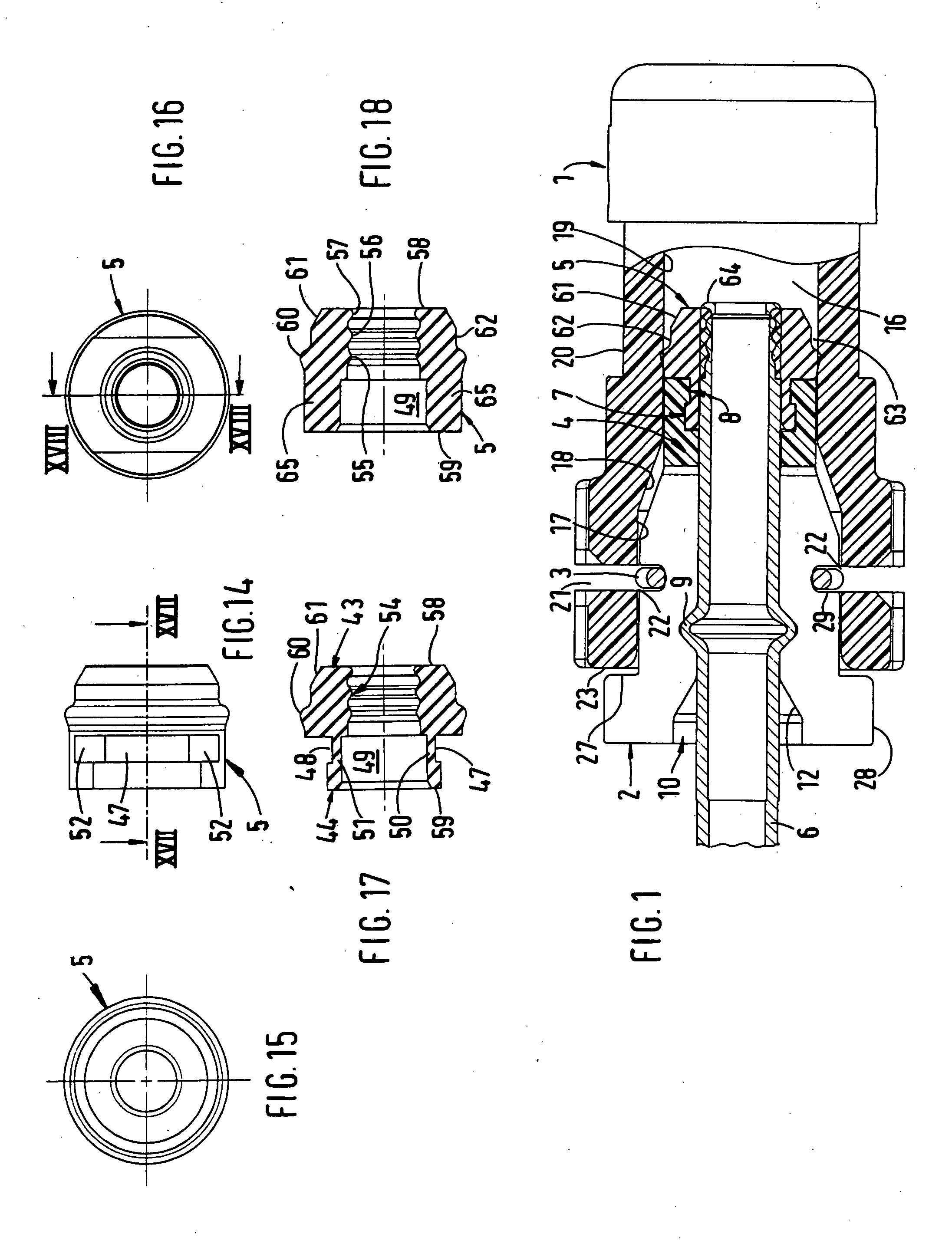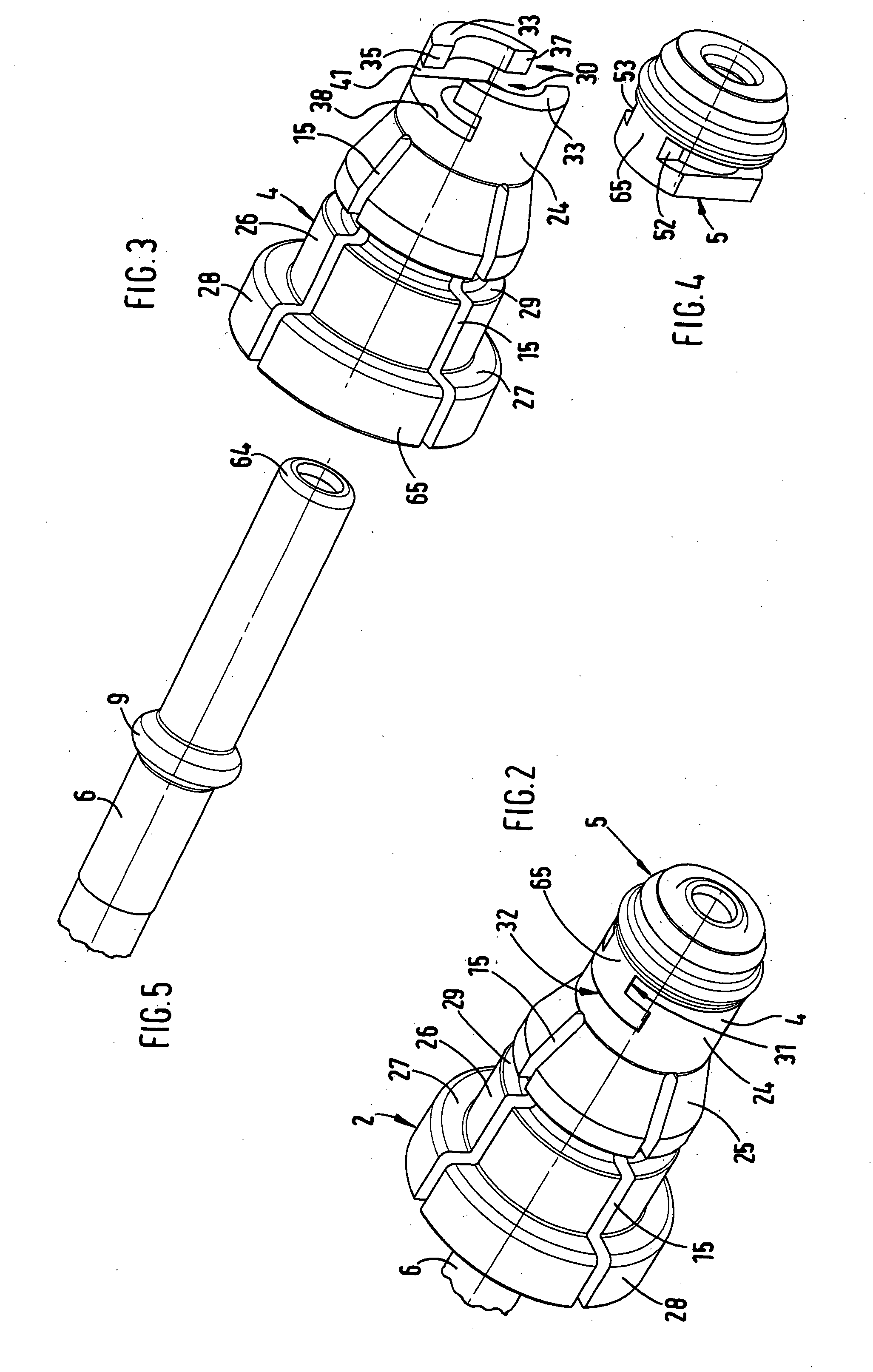Sealing arrangement for a hydraulic plug-in connection
- Summary
- Abstract
- Description
- Claims
- Application Information
AI Technical Summary
Benefits of technology
Problems solved by technology
Method used
Image
Examples
Embodiment Construction
[0031] The hydraulic plug-in connection shown in FIG. 1 consists of a socket 1 and a plug-in fitting 2 which is connected thereto and which can be releasably fixed in a sleeve 4 by means of a securing element 3 made of spring steel wire. The socket 1 may be the connection piece to a hydraulic unit, for example a cylinder housing, or else a bushing which connects two hydraulic lines.
[0032] The plug-in fitting 2 comprises an elastic sealing element 5 for sealing off the plug-in connection with respect to the exterior, and the sleeve 4 which is attached to a hydraulic tube 6 of a hydraulic line. A shaped profile 7, which will be described in more detail below, is formed on the sealing element and serves for form-fitting engagement with a complementary shaped profile 8 on the sleeve 4, which will also be described in more detail below, so as to captively fix the sealing element 4 on the sleeve 4.
[0033] As can be seen from FIGS. 1, 5, 6 and 9, a flange 9 is formed on the hydraulic tube...
PUM
 Login to View More
Login to View More Abstract
Description
Claims
Application Information
 Login to View More
Login to View More - R&D
- Intellectual Property
- Life Sciences
- Materials
- Tech Scout
- Unparalleled Data Quality
- Higher Quality Content
- 60% Fewer Hallucinations
Browse by: Latest US Patents, China's latest patents, Technical Efficacy Thesaurus, Application Domain, Technology Topic, Popular Technical Reports.
© 2025 PatSnap. All rights reserved.Legal|Privacy policy|Modern Slavery Act Transparency Statement|Sitemap|About US| Contact US: help@patsnap.com



